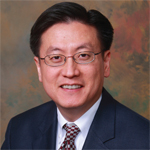
The Good Brigade / OFFSET BY shutterstocK
CHICAGO—At the 2018 ACR/ARHP Annual Meeting, rheumatologist project volunteers for the ACR’s Collaborative Initiatives talked about their efforts to educate primary-care providers, patients and families in their communities about systemic lupus erythematosus (SLE). Their goal is to facilitate timely diagnosis and treatment of lupus, especially in underserved communities.
Health Disparities
Health disparities, or differences in health closely linked to social or economic disadvantages, are a problem in rheumatology care today, said Irene Blanco, MD, MS, associate dean, Office of Diversity Enhancement; associate professor of medicine, Albert Einstein College of Medicine; and a rheumatologist at Montefiore Hospital, the Bronx, N.Y.
“Health disparities tend to negatively affect groups that have systematically experienced greater social or economic obstacles to health,” she said, quoting Healthy People 2020, a public health initiative from the U.S. Office of Disease Prevention and Health Promotion.1 These obstacles stem from discrimination due to race, socioeconomic status, religion, mental health issues, gender, geographic location, sexual orientation or physical disability.
“I am a physician of color. I’m Hispanic. I definitely did not grow up as a person of means. So this definition of health disparities has affected my life intimately,” said Dr. Blanco. “I went into rheumatology to address these issues, given that our populations of color are disproportionately affected by health disparities.”
Health disparities are linked to social determinants of health, which have an impact on adequate access to healthcare, including education level and access to healthy food or healthcare services, said Dr. Blanco. Health disparities include both fixed and modifiable factors.
“Some people would argue that a fixed factor, such as socioeconomic status, may be modifiable, like the idea of someone pulling themselves up by their bootstraps. But if you’re born without boots, you can’t really pull up your bootstraps. My focus is on modifiable risk factors, and things I can do on the micro level to address health disparities. I focus on psychosocial behaviors, social relationships and, particularly, education,” she said.
Volunteer Education Efforts
In 2010, Dr. Blanco had been a faculty member at Albert Einstein College of Medicine for just six days when she received an email from the ACR about volunteer projects to help eliminate health disparities for people with lupus.
“The projects were focused on provider and patient education, [which] was right in my wheelhouse. [The projects] included world-famous rheumatologists, and [the ACR was] looking for people to get involved particularly to disseminate patient and medical school material. [The group] really wanted to reach medical students and build cases that were representative of lupus patients’ experiences,” she said.
Dr. Blanco had just completed a master’s degree program and was waiting for her K award to come through, planning to become a translational investigator in lupus nephritis. She wanted to be more involved in patient and provider education, “given that health literacy and access to care are so important for patients.” She was already working with medical students and giving lupus awareness talks to community groups around New York City. So Dr. Blanco began volunteering with COIN’s Lupus Initiative.
Dr. Blanco has helped develop online CME content on lupus nephritis health disparities and a Spanish-language patient education program, El Lupus y El Corazon (Lupus and the Heart), and is working on the Lupus Self-Management Working Group, a project to cull existing online lupus content to create a self-management system for patients with lupus.
She was also involved in a nationwide effort called LEAP, the Lupus Education Advancement Project. She and her colleagues trained rheumatology fellows at Montefiore Medical Center to teach a continuing medical education course for primary-care providers to identify potential SLE patients early and refer them to rheumatologists. A study published in 2016 showed primary and emergency care providers may receive only 45 minutes of lupus education during medical school. LEAP was designed to help fill their knowledge gaps about the disease. When researchers analyzed 427 post-course assessments from participants, they found that over 85% said the activity improved their medical or practice knowledge, and they would make changes to benefit patient care.2
Dr. Blanco has volunteered with another lupus-related project, the Community Health Worker Lupus Clinical Trials Training Program (LuCTT), which aims to increase minority patient participation in clinical trials by engaging community health workers to improve health literacy, explain how clinical trials work and address issues of mistrust in the medical system.
“We posited that if patients were properly informed with positive and accurate materials, they are going to want to participate in clinical trials. It’s important that we get a critical mass of black patients into clinical trials, because we need to know how these populations are doing and whether these new medicines that we are developing are actually going to work in these patient populations,” she said.



